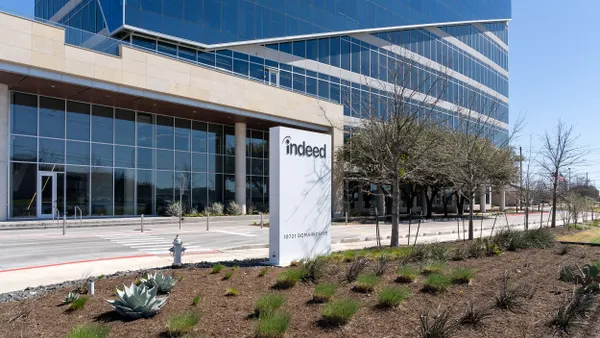Dive Brief:
- Almost half of American workers (47%) age 35 to 44 don't know what their career path should look like, despite having been in the workforce for more than a decade, according to new research from LinkedIn.
- These "career sleepwalkers" often feel they're on a "treadmill going nowhere," according to LinkedIn; they're not sure whether they should stay in the same job or invest in learning new skills.
- Younger workers, however, appear to have a less linear approach to work, LinkedIn said, and of those age 24 and younger, 40% said they'd talk to their boss about making a career change if they had access to additional opportunities to learn and grow within the workplace.
Dive Insight:
With so many employees willing to talk to managers before they make a career change, businesses would be wise to get the conversational ball rolling. In a tight applicant market, upskilling current employees can be far easier than finding the right employee among external candidates.
Studies continue to show that employees are not only open to career development, but actively interested in it. Personalizing training to meet the needs of the employee as well as the business can be a boon for learning engagement, but it involves looking at the long-term goals employees have set and connecting them with the needs of the enterprise. That type of planning can show businesses a long- and short-term return on investment.
And upskilling has a ripple effect, too: Helping employees find how their personal personal purpose aligns with the needs of the company can result in more engagement and loyalty. Employees want to know where they fit in the overall plan, for today and tomorrow. Actively working with internal candidates for current and future rolls by providing training and development can help reduce attrition while making future recruitment efforts much easier.











